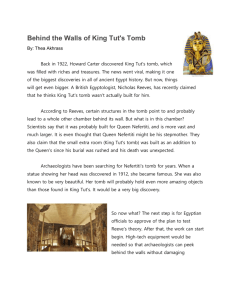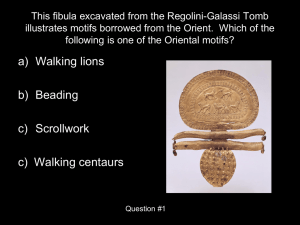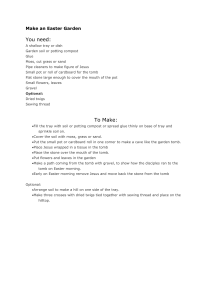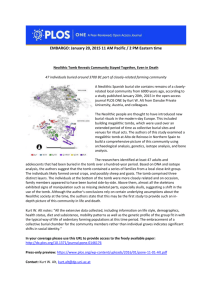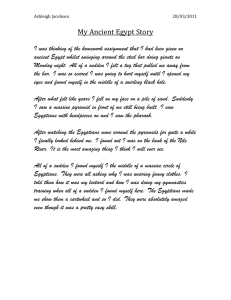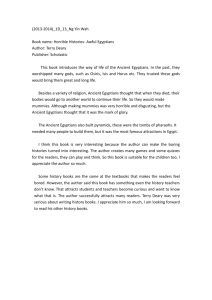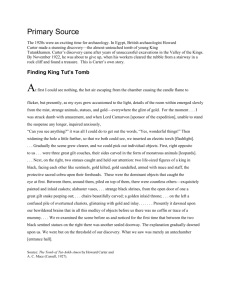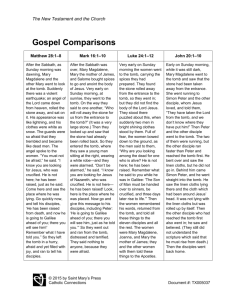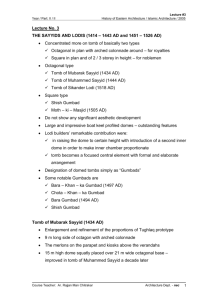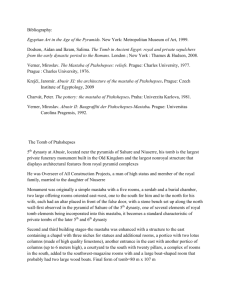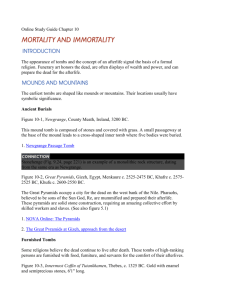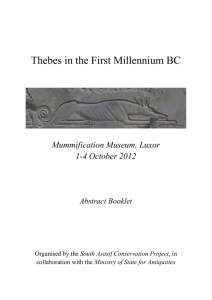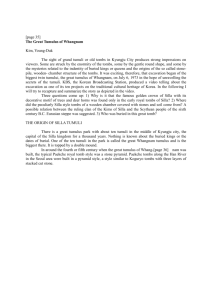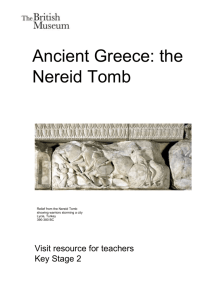The everyday life of ordinary Egyptians
advertisement
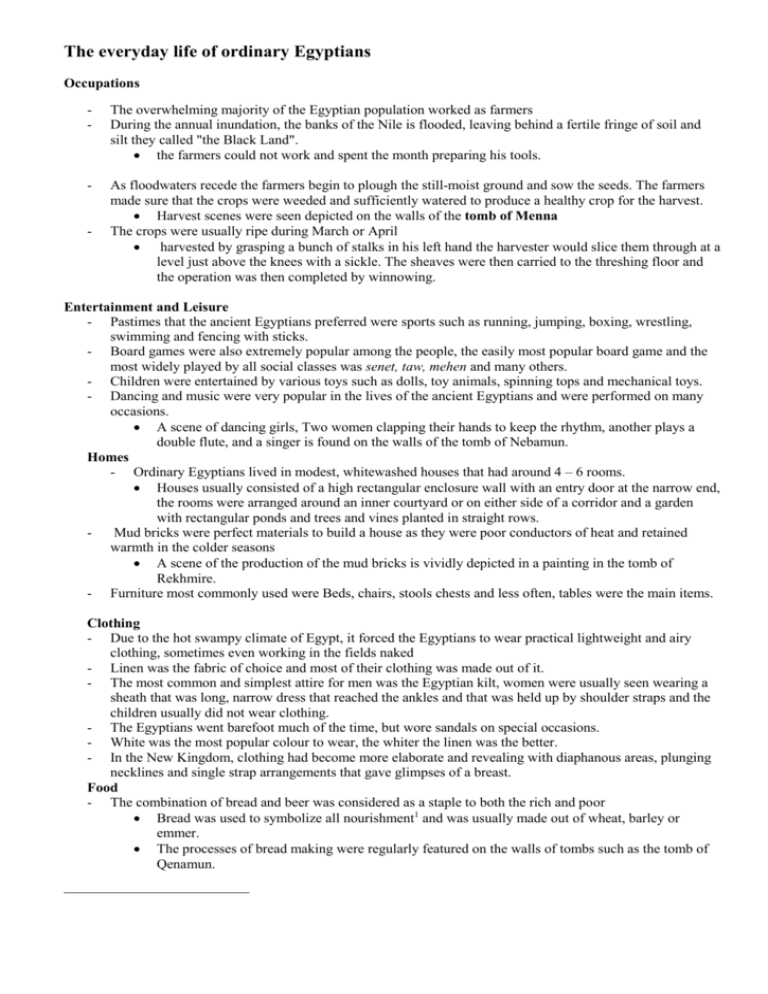
The everyday life of ordinary Egyptians Occupations - The overwhelming majority of the Egyptian population worked as farmers During the annual inundation, the banks of the Nile is flooded, leaving behind a fertile fringe of soil and silt they called "the Black Land". the farmers could not work and spent the month preparing his tools. - As floodwaters recede the farmers begin to plough the still-moist ground and sow the seeds. The farmers made sure that the crops were weeded and sufficiently watered to produce a healthy crop for the harvest. Harvest scenes were seen depicted on the walls of the tomb of Menna The crops were usually ripe during March or April harvested by grasping a bunch of stalks in his left hand the harvester would slice them through at a level just above the knees with a sickle. The sheaves were then carried to the threshing floor and the operation was then completed by winnowing. - Entertainment and Leisure - Pastimes that the ancient Egyptians preferred were sports such as running, jumping, boxing, wrestling, swimming and fencing with sticks. - Board games were also extremely popular among the people, the easily most popular board game and the most widely played by all social classes was senet, taw, mehen and many others. - Children were entertained by various toys such as dolls, toy animals, spinning tops and mechanical toys. - Dancing and music were very popular in the lives of the ancient Egyptians and were performed on many occasions. A scene of dancing girls, Two women clapping their hands to keep the rhythm, another plays a double flute, and a singer is found on the walls of the tomb of Nebamun. Homes - Ordinary Egyptians lived in modest, whitewashed houses that had around 4 – 6 rooms. Houses usually consisted of a high rectangular enclosure wall with an entry door at the narrow end, the rooms were arranged around an inner courtyard or on either side of a corridor and a garden with rectangular ponds and trees and vines planted in straight rows. Mud bricks were perfect materials to build a house as they were poor conductors of heat and retained warmth in the colder seasons A scene of the production of the mud bricks is vividly depicted in a painting in the tomb of Rekhmire. - Furniture most commonly used were Beds, chairs, stools chests and less often, tables were the main items. Clothing - Due to the hot swampy climate of Egypt, it forced the Egyptians to wear practical lightweight and airy clothing, sometimes even working in the fields naked - Linen was the fabric of choice and most of their clothing was made out of it. - The most common and simplest attire for men was the Egyptian kilt, women were usually seen wearing a sheath that was long, narrow dress that reached the ankles and that was held up by shoulder straps and the children usually did not wear clothing. - The Egyptians went barefoot much of the time, but wore sandals on special occasions. - White was the most popular colour to wear, the whiter the linen was the better. - In the New Kingdom, clothing had become more elaborate and revealing with diaphanous areas, plunging necklines and single strap arrangements that gave glimpses of a breast. Food - The combination of bread and beer was considered as a staple to both the rich and poor Bread was used to symbolize all nourishment1 and was usually made out of wheat, barley or emmer. The processes of bread making were regularly featured on the walls of tombs such as the tomb of Qenamun. - - - Vegtables and pulses were also a large part of their diet. onions and garlic, radishes, lettuce, celery, leeks, parsley, squash, cucumbers and various types of beans Poorer classes and farmers rarely consumed beef goats were eaten more often during special occasions such as a birth or a wedding Egyptians obtained their protein and meat through dining on fish and wildfowl . Fish were abundant in the Nile and were captured with woven dragnets and weir-baskets and wildfowl were caught with nets which are depicted in tombs such as the tomb of Nakht. Ducks, geese, pigeons and doves and other smaller species were regularly eaten. A special place in the Egyptian diet was reserved for sweet fruit such as figs, grapes, mulberries and dates which were usually dried due to the climate. Sources Tomb of Nebamun, 18th Dynasty Women dancing, clapping and playing a flute Tomb of Menna,18th Dynasty: Scene depicting the harvesting of crops. Tomb of Rekhmire, 18th Dynasty A scene of the production of the mud bricks Tomb of Qenamun, 18th Dynasty The processes of bread making Tomb of Nakht, 18th Dynasty Capturing wildfowl
